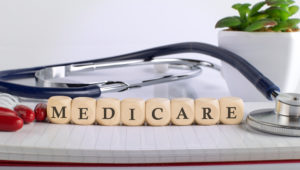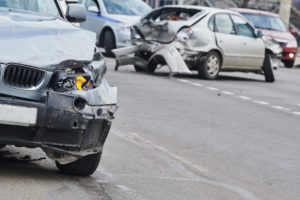Statistics, Safety and Steps to Take
The topic that many of my Injuryboard injury attorney colleagues have been recently discussing is the impact of uninsured drivers on serious injuries and deaths on our nation's highways. “Do uninsured motorists on our highways and interstates cause more injuries and deaths than insured drivers?” is the primary question I am addressing, which is a follow-up to my recent article entitled: Uninsured Motorist Car Insurance: It's Your Most Important Car Insurance and Here Is Why The secondary question is "Who Is Paying For the Uninsured Drivers Causing Interstate Injury or Deaths?"
Editor's Note: Other excellent related articles:
What is uninsured or underinsured motorist coverage on my auto … Steve Lombardi
Uninsured Drivers: Who Are These People? by Pierce Egerton
Risky Drivers Don't Just Drive Drunk and Speed – They Often Don't Have Insurance by Wayne Parsons
Uninsured–Underinsured Car Insurance: The Most Important Car Insurance …
Hit and run/uninsured driver personal injuries/accident claims-VA, NC
Frankly, so many of my injury clients misunderstand the uninsured motorist insurance laws that I have decided to do this article in a question and answer format.
Q: What do the most recent statistics show about the numbers of uninsured drivers on the highways and where are they?
A: The most recent estimated uninsured driver statistics were released in January 2009 by the Insurance Research Council. In 2007, the five states with the highest uninsured driver estimates were New Mexico (29 percent), Mississippi (28 percent), Alabama (26 percent), Oklahoma (24 percent), and Florida (23 percent). The five states with the lowest uninsured driver estimates were Massachusetts (1 percent), Maine (4 percent), North Dakota (5 percent), New York (5 percent), and Vermont (6 percent). North Carolina (NC) ranked at 12%, and Virginia (VA) ranked at 9%, on the lower end of total uninsured motorists considered by state with the highest percentage rate estimated at 29% and the lowest being Massachusetts at an amazing 1%.
Q: Is there a connection between a recession in the economy and more uninsured motorists on the highways?
A: Poor economic conditions are usually tied to an increase in uninsured motorists according to the IRC: an increase in the unemployment rate of one percentage point is associated with an increase in the uninsured motorist rate of more than three-quarters of a percentage point. Based on current unemployment rate projections, the percentage of uninsured motorists is expected to rise from 13.8 in 2007 to 16.1 in 2010. So the bad news is, there will probably be more uninsured drunk drivers, distracted drivers and wrong way drivers on the highways in the coming year or two.
Q: Who are the uninsured drivers on the highways and are they causing more injuries or deaths than insured drivers?
A: According to one study, uninsured vehicle owners are more likely to be males, have less education, be under 30 years old, rent their home, have a lower income, and move around more frequently. To figure out whether the uninsured drivers on the highways are really causing a higher percentage of car accident injuries and deaths than folks with car insurance, actually requires studying some of the state car crash/accident statistics so what I did was go to the Ohio Bureau of motor vehicle crash statistics, and I broke out my calculator. Why did I go to Ohio? Ohio has a fairly large total population, and is a melting pot of the United States as a whole, just like when we study the national presidential elections it is representative of a cross-section of the United States. In the year 2007, Ohio had 328,742 car crashes. 15,155 of those same car crashes involved uninsured drivers, and in 11,488 of those 15,155 car crashes the uninsured Ohio car drivers were at fault. That is a whopping 75%. There are many ways to look at that statistic (not all car wrecks involve two vehicles for example, so if a drunk driver hits a tree there is only that uninsured driver at fault) but I would assume that a random chance would show a 50% at fault rate for the uninsured motorists, assuming any two vehicle crashes, and even in some single car accidents, there is no “at fault” driver if act of god or weather is the sole cause). Based on the Ohio rates I think it is fair to say that the uninsured drivers are causing more than 50% of the wrecks involving the uninsured as one of the parties.
Q: I was in a car accident with an uninsured driver who was at fault, and I want to know if my car insurance is going to pay for the property damage, my personal injuries, lost wages and medical bills?
A: This is what a typical client asks me in the very first phone call. If the uninsured driver has no insurance, yes, your own car insurance uninsured motorist/property damage coverage will pay for the property damage to your car. Also, your own uninsured motorist ("UM") coverage of your car insurance will provide you the insurance to the maximum coverage. Essentially, your insurance company provides your level of total uninsured motorist coverage to defend the at fault uninsured driver. While this seems unfair at first, it is supremely important because it is going to provide you the insurance you need to cover your lost wages, medical bills, and recovery for permanent injuries, pain, suffering and mental anguish. Please see my other article Uninsured Motorist Car Insurance: It's Your Most Important Car Insurance and Here Is Why if you need more information about this.
Q: Will my insurance premium rates go up if I make a claim against the uninsured driver/motorist?
A: If you are not the at fault party, under nearly all states uninsured motorist laws your insurance company may not raise your premiums as a result of making an uninsured motorist claim against the at fault uninsured driver. I explain this to every client involved in an accident with a non-insured driver. In Virginia, like many states, this provision is by statute or regulation.
But this question also asks whether we pay indirectly for the cost of uninsured motorists causing injuries and deaths. To answer this question, requires an explanation of how the typical state uninsured motorist laws work. Virginia is a rather typical uninsured motorist state. At the time of registration, the motor vehicle owner must certify whether the vehicle is insured or uninsured. If the vehicle is uninsured, the motor vehicle owner is required to pay to DMV a $500 uninsured motor vehicle fee in addition to normal registration fees. Payment of the $500 fee does not provide the motorist with any insurance coverage. If involved in an accident, the uninsured motorist remains personally liable. All of the fees collected by the state go in to something called the Uninsured Motorists Fund. Persons found in violation of Virginia’s motor vehicle insurance laws must comply with established penalties. They must comply with the terms of an order of suspension or their driving and registration privileges will be suspended. Compliance includes the payment of a $500 penalty fee and filing proof of insurance, a certificate of insurance, for three years. During FY 08, 37,070 uninsured motorists paid the penalty fee after being detected through the Virginia Insurance Verification Program-most states have a similar “verification” system, and some like Ohio, have a random certification program to check on insurance. The number of orders of suspension issued during FY 08 totaled 39,698 in Virginia. See below about where that Uninsured Motorist Fund money goes!
Q: But don't my own car insurance (uninsured motorist premiums) pay for the uninsured motorist who caused my accident?
A: Certainly, a part of our own premiums for our own uninsured motorist coverages pay for the uninsured motorist, but think about this: that coverage and that premium is protecting you and me from the uninsured drunk driver, uninsured hit-and-run driver, wrong way drunk driver, etc.
Secondly, we are not paying all of those costs, the uninsured motorists are contributing to those premiums (in 2008 in Virginia that totalled 18 million dollars) and here is how it works according to the Virginia DMV:
Gross revenue collections from the Uninsured Motor Vehicle (UMV) and penalty fees comprise the Uninsured Motorists Fund and totaled $18,577,191 for FY 08. DMV’s appropriation from the gross revenue collected was $11,846,600. The net funds available for transfer to the State Corporation Commission (SCC) were $6,730,591. The SCC distributes moneys annually from the Fund among the insurance companies writing motor vehicle bodily injury and property damage liability insurance on motor vehicles registered in Virginia. Insurance companies receive these funds in the same proportion as the number of motor vehicles that they insure. (Virginia requires uninsured motorist coverage in all motor vehicle liability policies.) Funds distributed by the SCC are used to help offset the cost of the uninsured motorist coverage required for all liability insurance policies written in Virginia.
Third: if our insurer's defend the uninsured/at fault driver, the insurer can later still collect what it pays from that uninsured driver in a legal claim called subrogation. Drunk drivers with no insurance are not allowed to bankrupt their liability. Insolvent, "poor" uninsured drivers are able to bankrupt such claims if no drinking and driving is involved and they meet the bankruptcy requirements. The bottom line is that the uninsured driver still has personal responsibility even if our own car insurers step in to provide UM coverage.
So, in translation, the insurance companies writing car insurance policies in Virginia collect a percentage of the uninsured motorists fund in the same proportion that they write total car insurance policies in relation to all other car insurers writing such policies in the state. And, the same insurers collect an uninsured motorist premium from each policy holder that has car insurance as uninsured motorist coverage is mandatory in Virginia and in most states that have an uninsured motorist coverage law.
Q: What steps should consumer take to protect themselves against an uninsured highway driver?
A: Unfortunately, it is not realistic to require some kind of special sign on every uninsured motor vehicle, so you just don't know whether the other guy is insured or not when you drive on an interstate highway. And, no, you can't get higher uninsured motorist coverage the day after you are in a car wreck caused by a non insured drunk or distracted driver. So the most practical steps you can take if you are reading this article is to be sure that you have high enough uninsured motorist coverage on all of the cars on your car insurance policy. Usually, your uninsured motorist coverage can be equal to but not higher than your car liability coverage-but never set your uninsured motorist coverage lower than your liability limits (liability limits are your total coverage if you are careless or at fault-uninsured motorist coverage limits provide you coverage if the uninsured motorist is at fault). In part two of this series, I give some practical explanations about the way uninsured motorist coverage or underinsured motorist coverage applies in several examples. How high should your UM coverage be? As high as you can imagine you might lose if you had medical bills and couldn't work for several years. I recommend not less than $250,000 in UM coverage. Explanations relating to how UM coverage works when the other driver has only minimum, inadequate insurance ("underinsured motorist coverage" or "UIM") will be covered in a future related article by this author.
About the Editors: Shapiro, Lewis & Appleton personal injury law firm (VA-NC law offices) edits the injury law blogs Virginia Beach Injuryboard, Norfolk Injuryboard, as well as the Northeast North Carolina Injuryboard as a pro bono service to consumers. Lawyers licensed in: VA, NC, SC, WV, DC, KY, who handle car, truck, railroad, and medical negligence cases and more.

Rick Shapiro has practiced personal injury law for over 30 years in Virginia, North Carolina, and throughout the Southeastern United States. He is a Board-Certified Civil Trial Advocate by the National Board of Trial Advocacy (ABA Accredited) and has litigated injury cases throughout the eastern United States, including wrongful death, trucking, faulty products, railroad, and medical negligence claims. During his three-decade career, Shapiro has won client appeals before the VA Supreme Court, VA Court of Appeals, NC Supreme Court, SC Supreme Court, WV Supreme Court, TN Supreme Court, and three times before the United States Court of Appeals for the Fourth Circuit, underscoring Shapiro’s trial achievements. In addition, he and his law firm have won settlements/verdicts in excess of $100 million. His success in and out of the courtroom is a big reason why he was named 2019 “Lawyer of the Year” in railroad law in U.S. News & World Report's Best Lawyers publication (Norfolk, VA area), and he has been named a “Best Lawyer” and “Super Lawyer” by those peer-reviewed organizations for multiple years. Rick was also named a “Leader in the Law, Class of 2022” by Virginia Lawyers Weekly (total of 33 statewide honorees consisting of lawyers and judges across Virginia). And in September 2023, Rick was selected as a recipient of the National Board of Trial Advocacy (NBTA) 2023 President’s Award. Although many nominations were submitted from across the country, Rick was just one of eight attorneys chosen by the prestigious National Board which certifies civil trial attorneys across the U.S. Rick was also recently named to Virginia Lawyers Weekly 2024 Virginia’s Go To Lawyers Medical Malpractice. The attorneys awarded this honor are nominated by their colleagues and chosen by a panel from the publication.










3 Comments
Steve Lombardi
Rick: Well written and way too much information for one sitting, but I wouldn't have you do it any other way. When people have a question like, what do I do to protect myself against uninsured drivers; this blog will come in very handy. Well done, this adds more concrete information for drivers, parents, consumers, teens and the elderly to better understand why they need to have adequate limits of uninsured and underinsured auto insurance. Onward we march...
Wayne Parsons
Rick: I have printed this article and will give it out to my staff to read. The work you did in cataloging the various aspects on uninsured motorist insurance _ and the various states resppnses to unisured drivers is appreciated. In Hawaii we have a similar set up and now I am inspired to educate Hawaii drivers (and politicians) about this important subject.
Jane Akre
Rick-
Job well done- thanks for being a great resource for us all!!!
Comments for this article are closed.